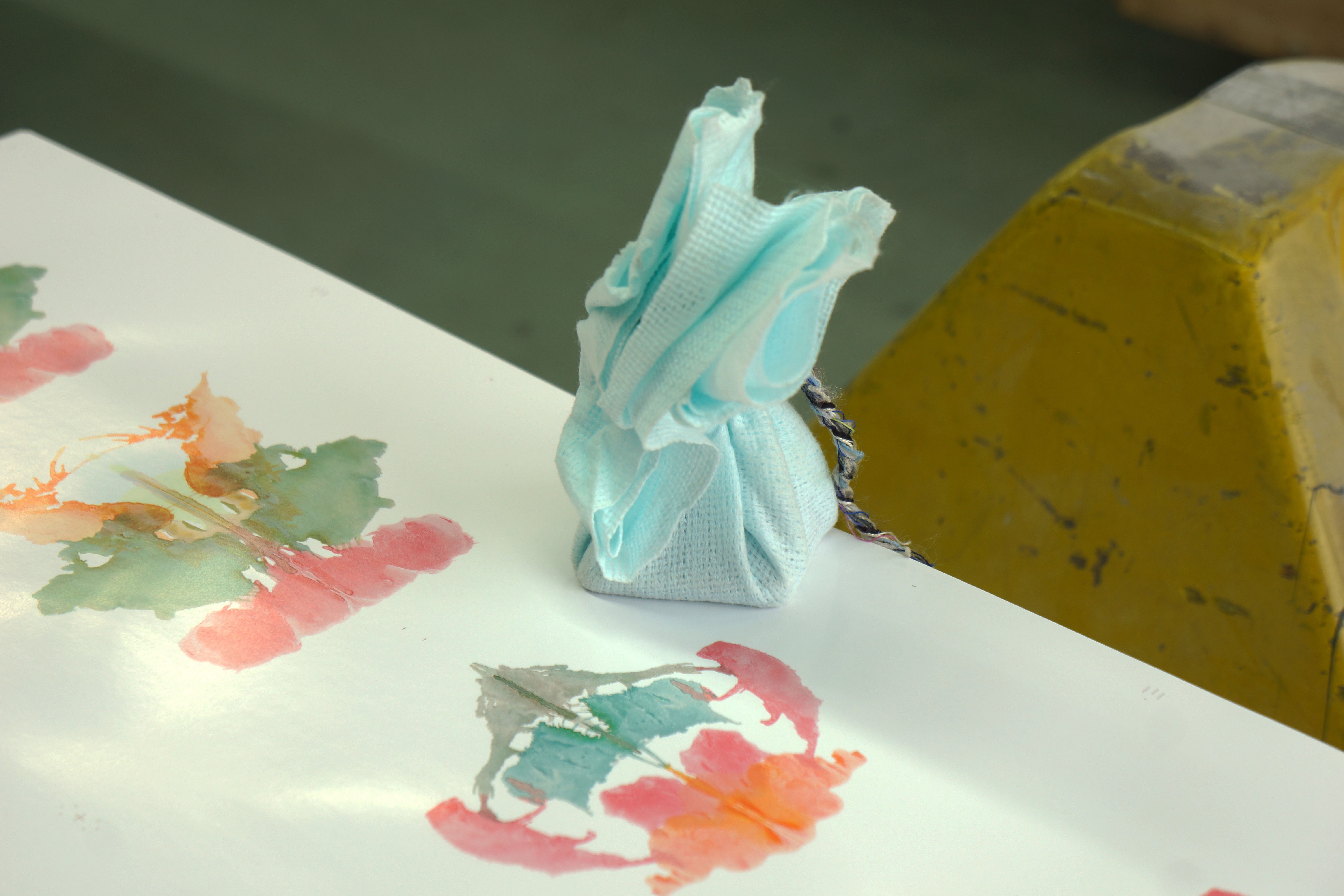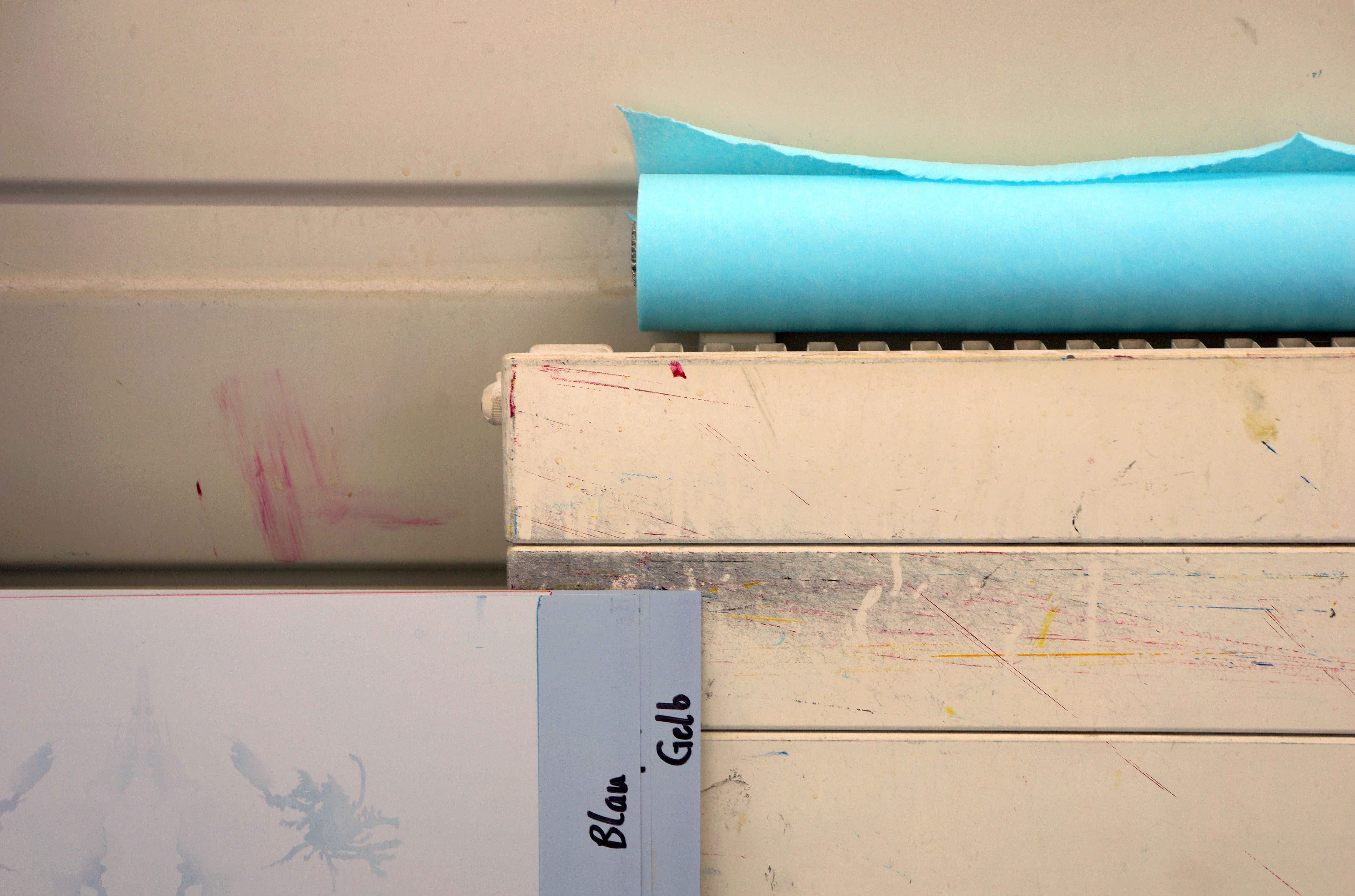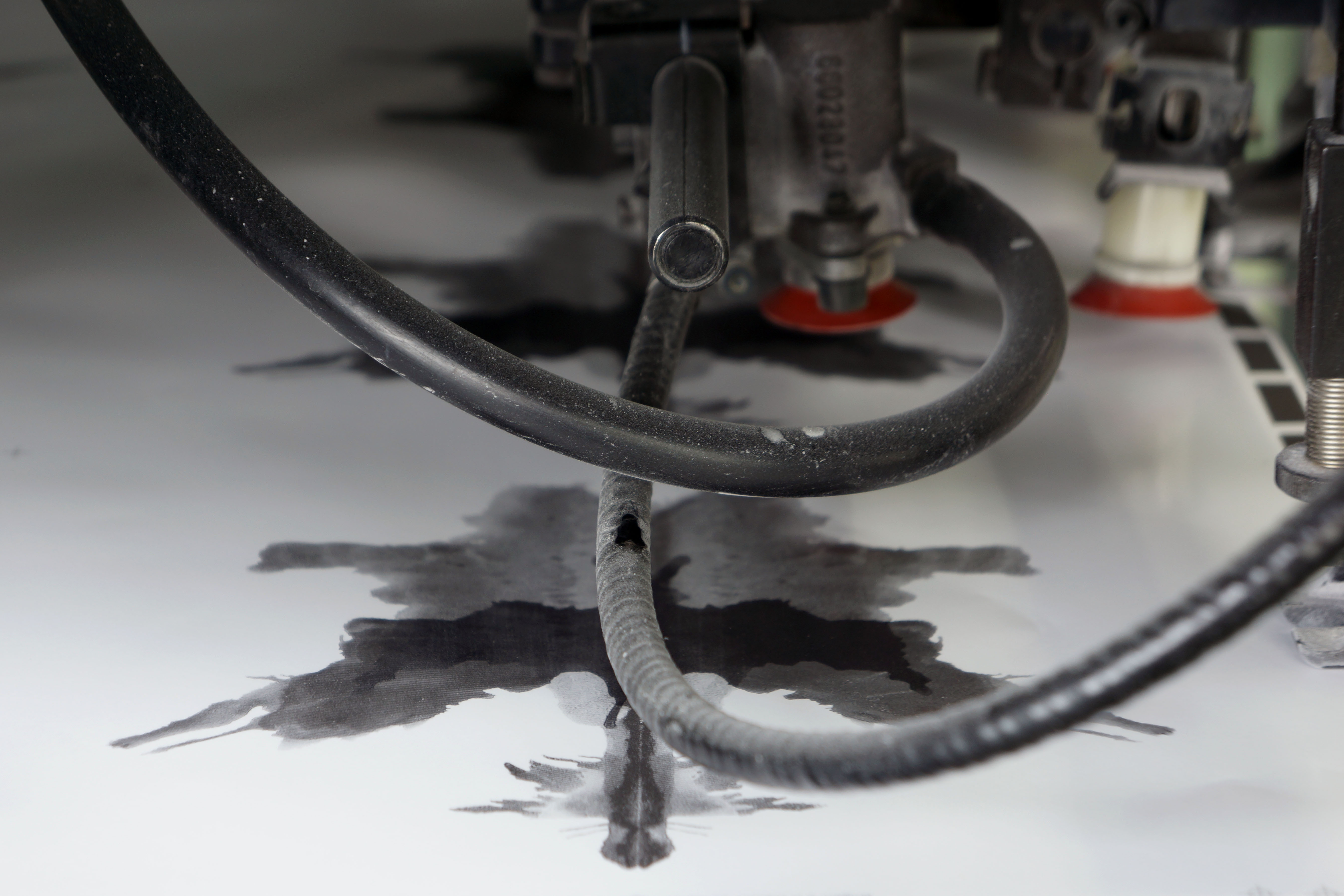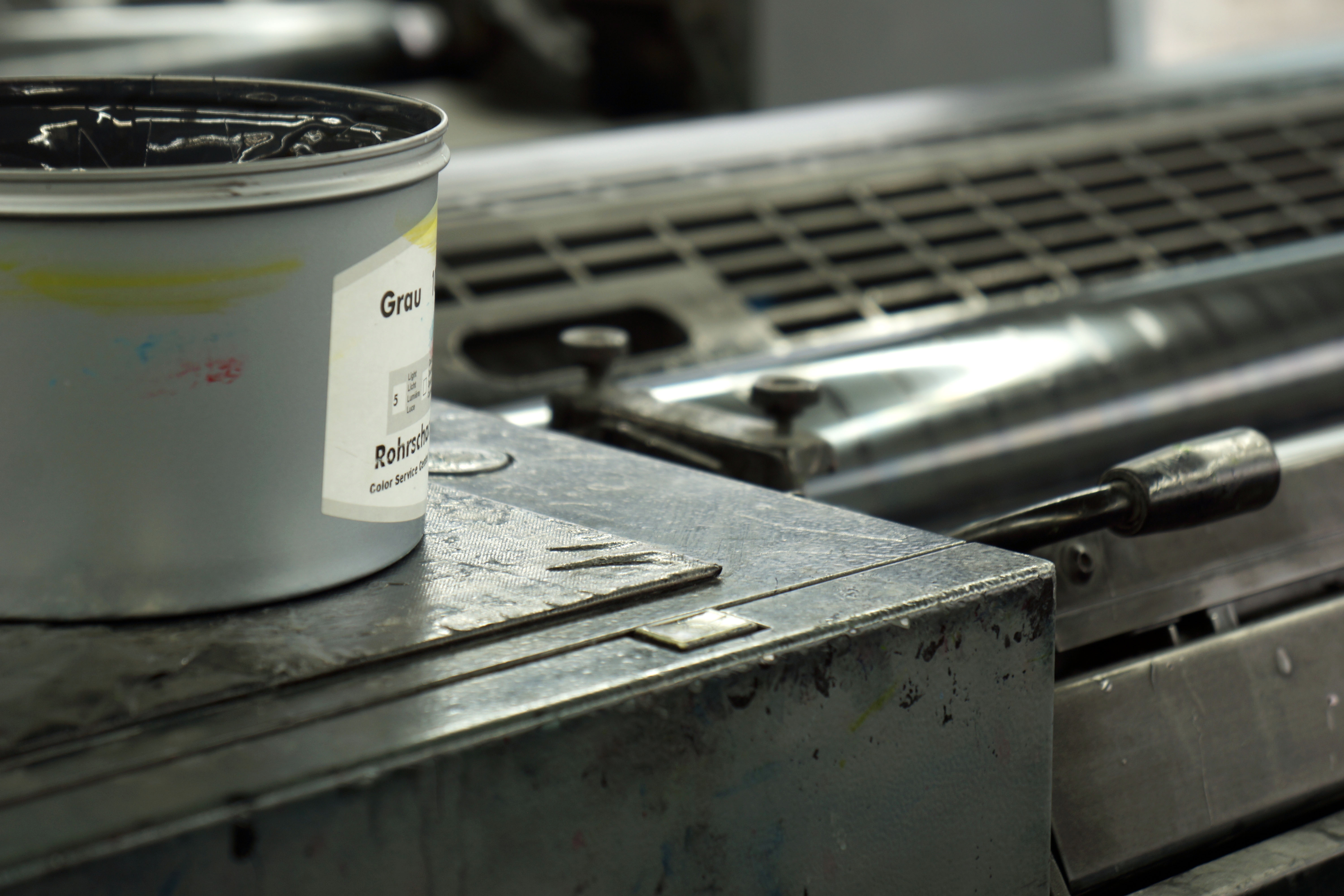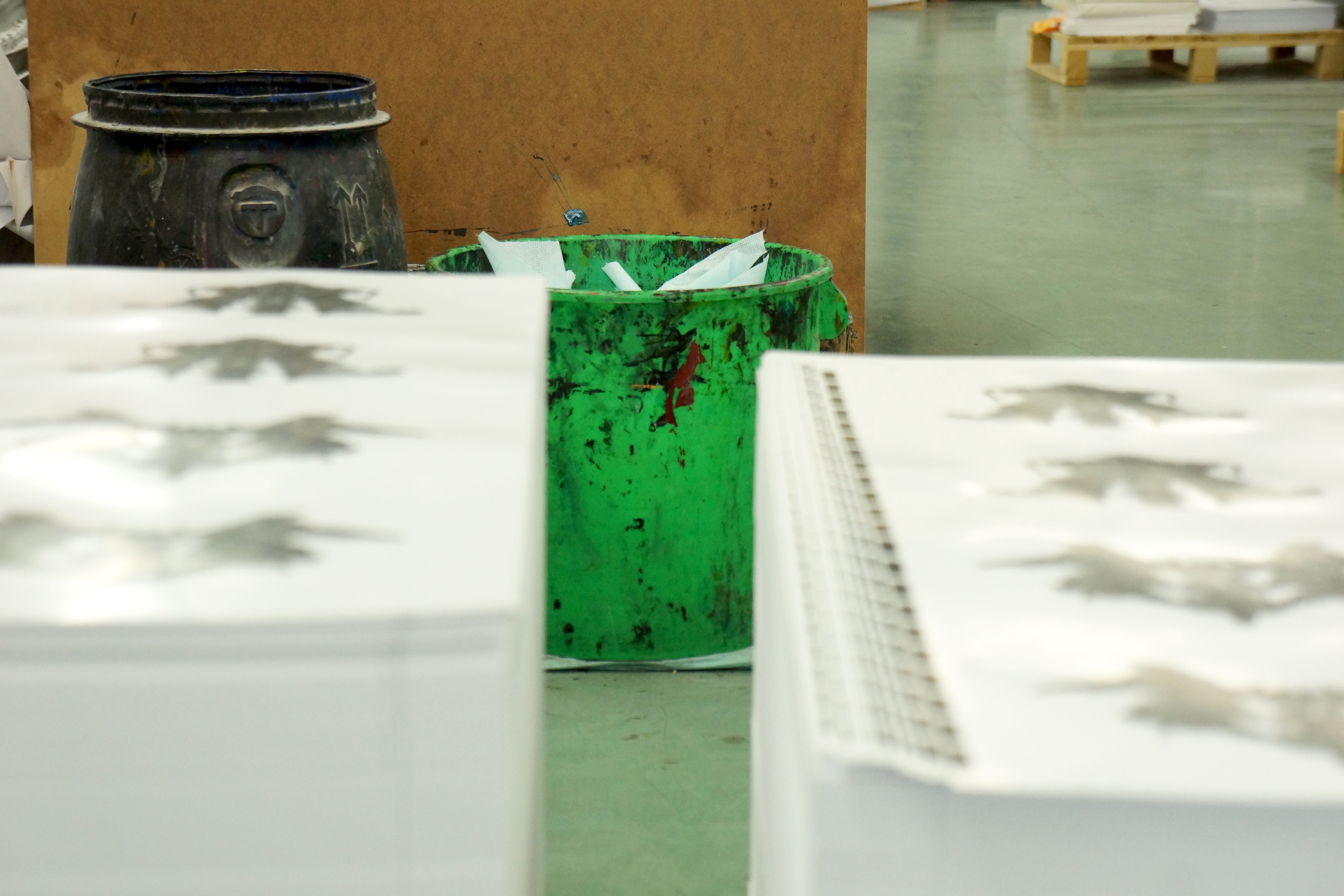Detail and Whole; Movement,
Colour, and Form
2023
10 colour photographs, each 10”x8”
This series of photographs document the printing of the celebrated Rorschach inkblot tests, the first time that this has been allowed since they were first produced in 1921.
In 1917, the Swiss psychologist Hermann Rorschach began developing a test — actually he thought of it more as an experiment — using inkblots as a means of diagnosing a person’s psychological state. He was not the first to consider the importance of these indeterminate forms — in the newly developing science of psychology inkblots were being used as prompts by which one might gauge a subject’s imagination — but he soon began to consider these methods as somewhat limited. And so, he set about creating images which seemed not to have been made at all, but which were also not simply random. Their purpose must not be obvious, but they must seem to have one.
Rorschach also began to design the ‘protocol’ by which the subject’s responses were gathered and assessed, and here he adopted categories that seemed to relate to the avant-garde art of the period with which he was fascinated: Detail and Whole; Movement, Colour, and Form.
As Rorschach well understood, if the responses of different subjects are to be compared then the thing to which they are responding must be the same, and, given that this is a test which depends upon visual acuity, then it must be exactly the same; ‘similar’ is hardly a scientific category. The practical difficulties of reproducing the inkblots led to delays in first publishing the work — which was given the title Psychodiagnostik — and when it did appear in 1921, Rorschach had personally supervised the production of the print run of 1500 sets, even, at this late stage, eliminating elements which he now considered irrelevant for diagnostic purposes. The book was sold with ten printed inkblots in a separate envelope; the buyer was to glue the images to card themselves.
While the inkblots were soon becoming well-known, the method of their production was secret, and this remains the case even to this day. (Even the printer does not know it all: each ink colour is specially prepared elsewhere and is used for the inkblots alone.) Developments in print technology over the past century have meant that great care has had to be taken in order to ensure consistent results from different means. For the past decade the inkblots have been produced using lithographic plates, but not with the Cyan, Magenta, Yellow, and Black inks used to print magazines and books, but with
specially mixed Rorschach ones.
In agreeing to let me pursue this project, the publisher made certain conditions, the most perplexing of which was that if I were to document the printing of the Rorschach inkblots, I must do so without revealing any information about the printing of the Rorschach inkblots. It seemed a test more exquisitely elegant than the one for which the cards themselves are used.
The paper size of these prints is 10”x8”, the size of the original Rorschach inkblot cards produced by Hogrefe. The photographs are archivally printed on heavy-duty Hahnemühle photo rag paper, with a narrow white border.
2023
10 colour photographs, each 10”x8”
This series of photographs document the printing of the celebrated Rorschach inkblot tests, the first time that this has been allowed since they were first produced in 1921.
In 1917, the Swiss psychologist Hermann Rorschach began developing a test — actually he thought of it more as an experiment — using inkblots as a means of diagnosing a person’s psychological state. He was not the first to consider the importance of these indeterminate forms — in the newly developing science of psychology inkblots were being used as prompts by which one might gauge a subject’s imagination — but he soon began to consider these methods as somewhat limited. And so, he set about creating images which seemed not to have been made at all, but which were also not simply random. Their purpose must not be obvious, but they must seem to have one.
Rorschach also began to design the ‘protocol’ by which the subject’s responses were gathered and assessed, and here he adopted categories that seemed to relate to the avant-garde art of the period with which he was fascinated: Detail and Whole; Movement, Colour, and Form.
As Rorschach well understood, if the responses of different subjects are to be compared then the thing to which they are responding must be the same, and, given that this is a test which depends upon visual acuity, then it must be exactly the same; ‘similar’ is hardly a scientific category. The practical difficulties of reproducing the inkblots led to delays in first publishing the work — which was given the title Psychodiagnostik — and when it did appear in 1921, Rorschach had personally supervised the production of the print run of 1500 sets, even, at this late stage, eliminating elements which he now considered irrelevant for diagnostic purposes. The book was sold with ten printed inkblots in a separate envelope; the buyer was to glue the images to card themselves.
While the inkblots were soon becoming well-known, the method of their production was secret, and this remains the case even to this day. (Even the printer does not know it all: each ink colour is specially prepared elsewhere and is used for the inkblots alone.) Developments in print technology over the past century have meant that great care has had to be taken in order to ensure consistent results from different means. For the past decade the inkblots have been produced using lithographic plates, but not with the Cyan, Magenta, Yellow, and Black inks used to print magazines and books, but with
specially mixed Rorschach ones.
In agreeing to let me pursue this project, the publisher made certain conditions, the most perplexing of which was that if I were to document the printing of the Rorschach inkblots, I must do so without revealing any information about the printing of the Rorschach inkblots. It seemed a test more exquisitely elegant than the one for which the cards themselves are used.
The paper size of these prints is 10”x8”, the size of the original Rorschach inkblot cards produced by Hogrefe. The photographs are archivally printed on heavy-duty Hahnemühle photo rag paper, with a narrow white border.
